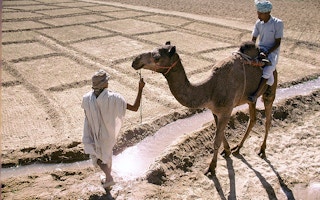When this year’s UN climate talks open in Egypt on 6 November, it will be the first time since 2016 they have taken place on African soil. COP27 is being dubbed “The African COP”.
Under the theme “together for implementation”, the Egypt presidency is set to emphasise the climate issues most pertinent to African and other developing nations. Central to this will be the climate finance owed by the developed to the developing world, and the mobilisation of finance for adapting to climate impacts and compensating for the loss and damage they cause.
The urgency of adaptation
Climate change impacts have been increasingly apparent across the world this year, from deadly heatwaves in Asia and Europe to devastating floods in Pakistan and the multi-season drought in the Horn of Africa. Climate impacts are increasingly being shown to have destabilising ripple effects through society and the economy.
Africa is the least climate-resilient region of the world. Climate shocks are contributing to direct loss of economic assets and livelihoods. This increases the risk of famine, providing impetus for destabilising migration and threatening economic growth. The Global Centre on Adaptation (GCA) estimates that by 2040, the impacts of climate change could cost Africa between 2 and 4 per cent of its GDP.
Adaptation – societies and economies adapting to existing and expected climate change impacts – will be central to this year’s COP in Sharm el-Sheikh.
At last year’s COP26 in Glasgow, developed nations agreed to double international finance for adaptation by 2025. Translating such pledges into mobilised finance in the real world has so far proven problematic. Patrick Verkooijen, chief executive officer for the GCA, argues that progress and transparency on this pledge will be key to the success of COP27.
“
African countries, and developing countries in general, have been united in emphasising the need for predictable resources to tackle the immediacy of loss and damage.
Jean-Paul Adam, technology, climate change and natural resource management division director, UN Economic Commission for Africa
Together with the African Development Bank (AfDB), the GCA is involved in the largest adaptation scheme in the world. The Africa Adaptation Acceleration Program (AAAP) consists of a main fund, managed by the AfDB, that aims to mobilise US$25 billion for adaptation projects in Africa over the next five years and an “upstream financing facility”, managed by the GCA, involved in research and design for the projects. It has broad buy-in from African governments.
Its main fund has so far raised US$12.5 billion, coming from the AfDB itself, and the upstream financing facility received funds totalling US$55 million in September this year. The AAAP expects further pledges to be made in Sharm el-Sheikh.
“Ensuring the full capitalisation of… the AAAP and the $250 million AAAP upstream facility at COP27 would serve as a landmark contribution towards the summit’s success,” Verkooijen tells China Dialogue.
In their 2021 report on adaptation in Africa, the GCA estimated that the costs of adaptation on the continent will total US$50 billion per year by 2050, even if global warming is kept beneath 2C. While adaptation is expensive, studies show that the sums involved would be far smaller than the losses if nations do nothing.
Jean-Paul Adam, director of the Technology, Climate Change and Natural Resource Management Division at the UN Economic Commission for Africa (UNECA), notes that investment in adaptation brings significant return on investment, and dividends in terms of reducing future risk.
“There are also opportunities to link adaptation more directly to the creation of value in African economies and the evolution of the implementation of the African Continental Free Trade Area will also help define this,” Adam says.
He says the missing ingredient is the capacity among African countries to invest upfront in adaptation and resilience, suggesting that the most immediate and obvious solution is to make grant-based financing available.
The COP27 outcomes on adaptation will be relevant far beyond Africa. Across the developing world, vulnerable communities and economies are facing climate change impacts.
Missing finance
In 2009, developed countries pledged to mobilise US$100 billion in climate finance to developing countries every year by 2020. According to the OECD, however, finance provided and mobilised in 2020 reached only US$83.3 billion.
Moreover, as outlined in the AfDB’s 2022 Economic Outlook last month, in spite of its extreme climate vulnerability and general under development, Africa has some of the lowest per capita climate finance inflows in the world. “This is at odds with the tenets of true climate justice,” the bank concluded. Climate finance will be a second major focus of COP27.










